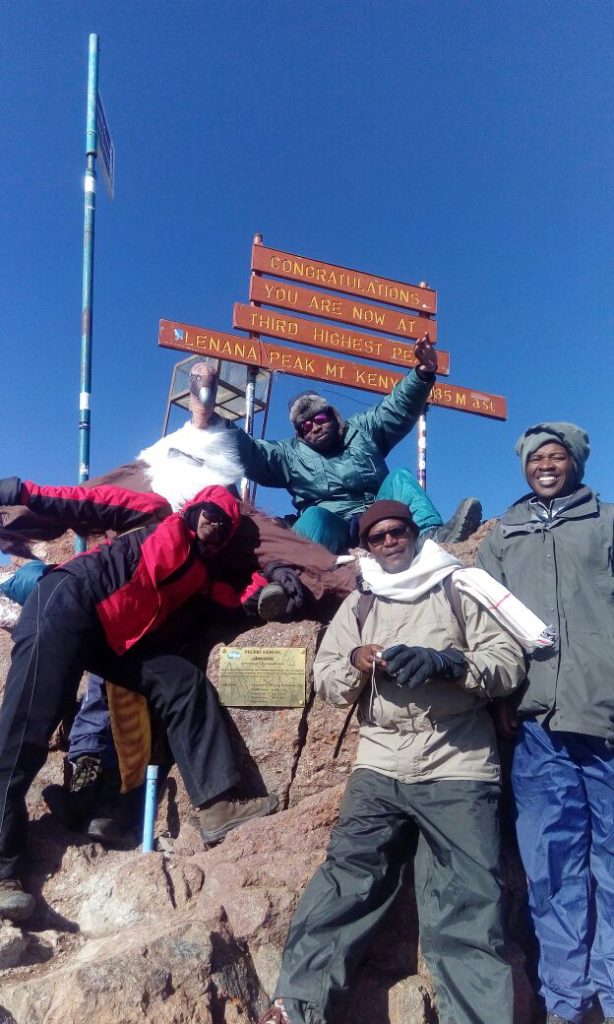By Mary Mwendwa
Members of BirdLife International Africa office and friends climbed Mt. Kenya last week to raise awareness on the dangerous decline of African Vultures.
The nine members walked and hiked for over 80 kms in five days (27th June to 1st July) .
African Vultures are said to be facing threats of poisoning, electrocution and body parts used in traditional healing . For example Ruppells, White-headed, Hooded and White-Backed Vultures are critically endangered according to IUCN Red list.

Such alarming reports about vultures made BirdLife staff and friends embark on the noble cause of climbing Mt.Kenya.
According to Dr Julius Arinaitwe, BirdLife International’s Regional Director for Africa who led the team , “Vultures are key to human well-being and are worthy our individual sacrifice and effort”. These words inspired the nine hikers who started off at Naro Moru gate of Mt. Kenya National Park on 27th June 2016, made an overnight stop over at the Met Station which is 3,000 M asl on 28th June 2016. They then hiked to Mackinder’s Camp, which is the base of scaling the peaks on 29th. Mackinders’ Camp sits at an altitude of 4,300 M asl.
The team left Mackinder’s camp at 2 am on 30th June and reached Austrian Hut by 6.30 am to a frozen ground and cold winds. Austrian Hut appeared as the moon disappeared to the west and the morning sun smiled from the eastern sky.
The team then embarked on the final trip to the peak where they reached by 8.30 am and one of them donned the vulture suit on Mt Kenya’s third highest peak – point Lenana at 4,985 metres above sea level. It was a great and happy moment signifying victory for vultures that need concerted human effort to prevent them from sliding towards extinction.
As the team descended back to Mackinder’s Camp, Dr Kariuki Ndang’ang’a who was part of the team said it had been a worthwhile cause: “We can do it all over again. We are looking forward to the next climb to raise more vulture awareness .”














